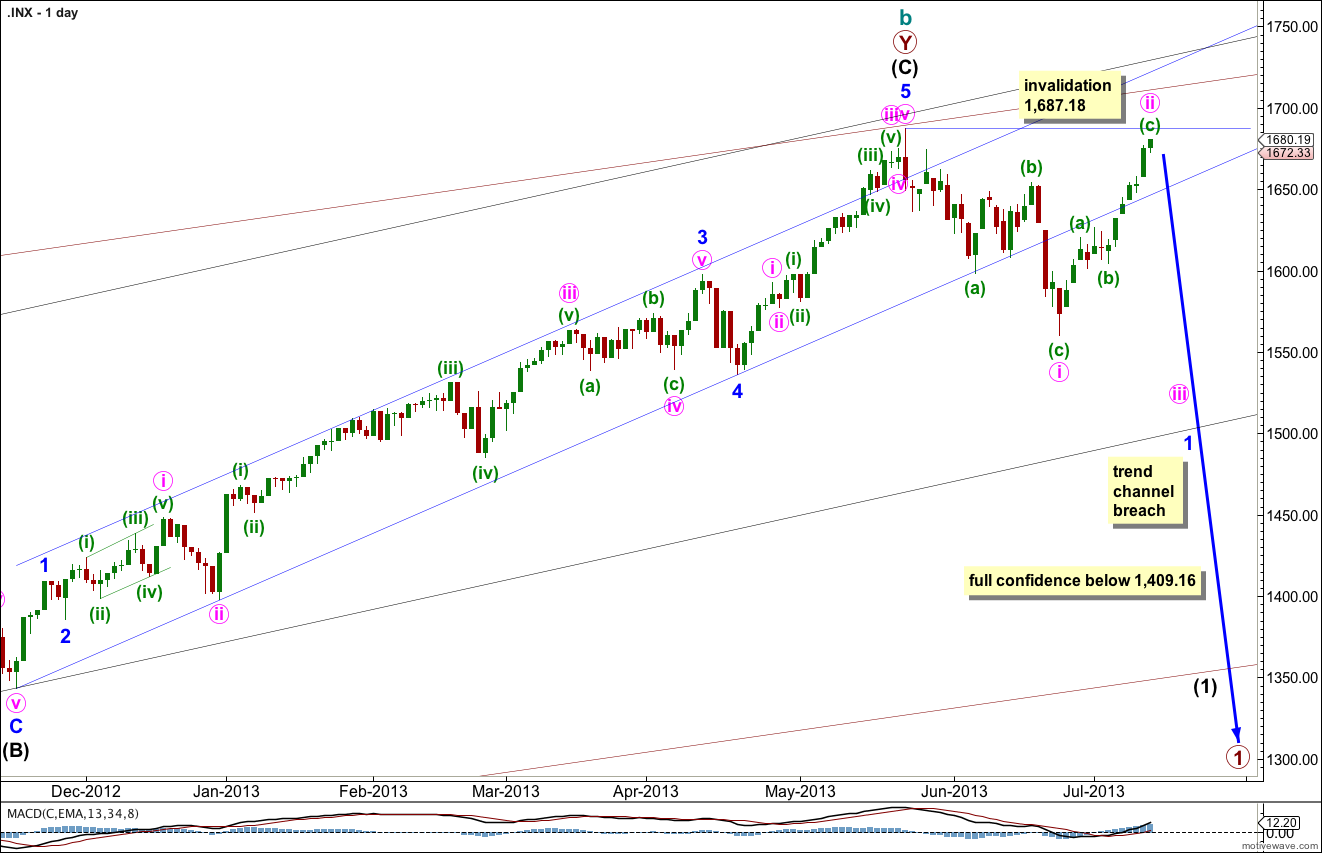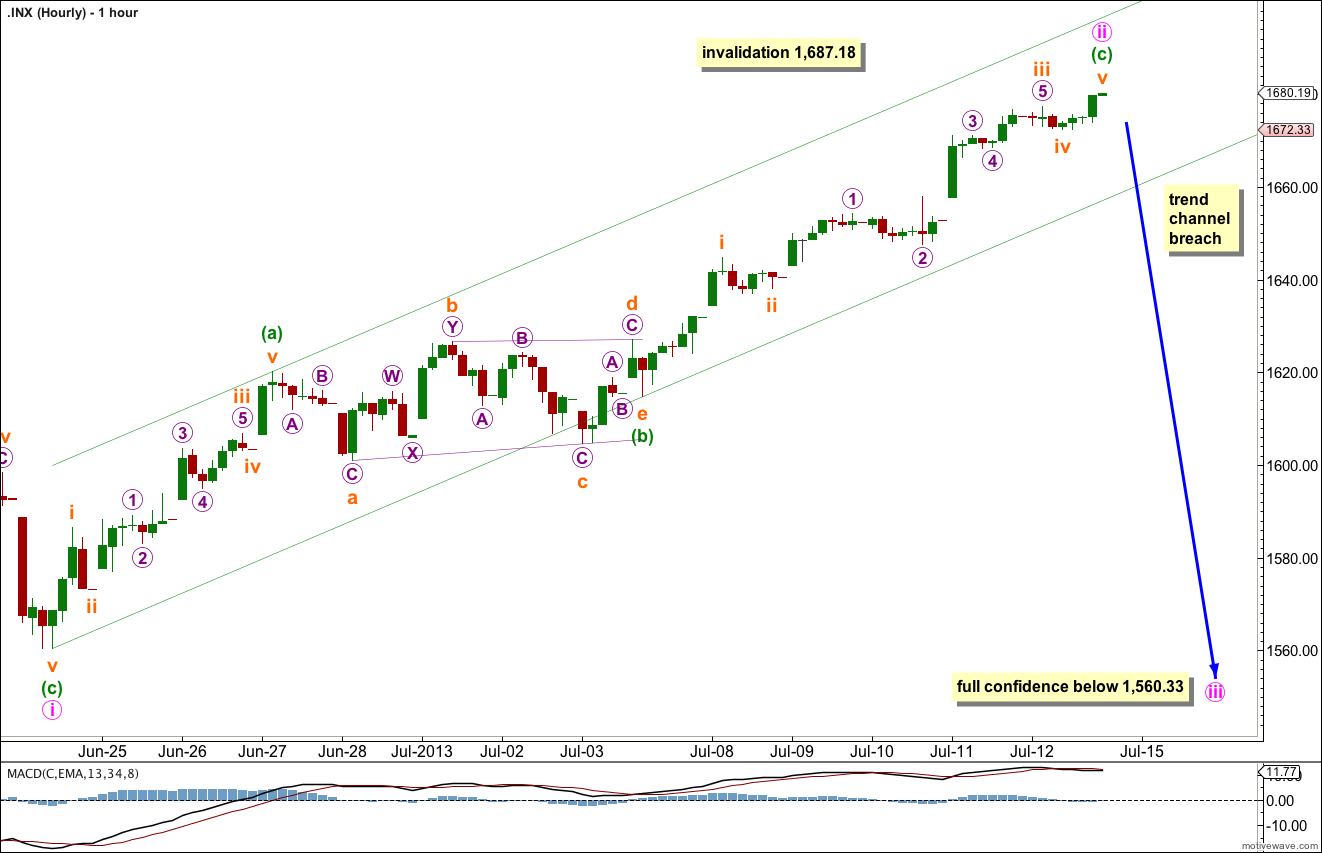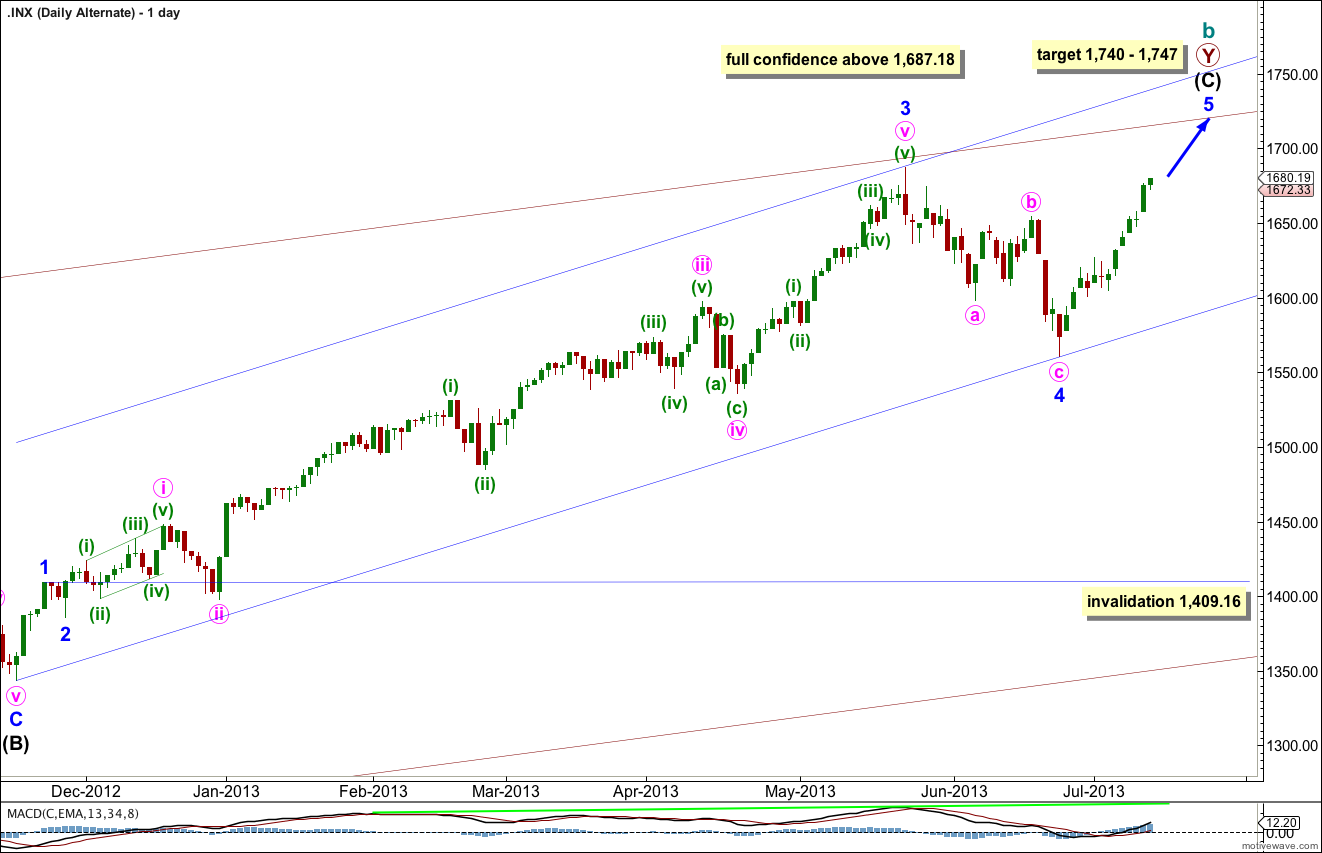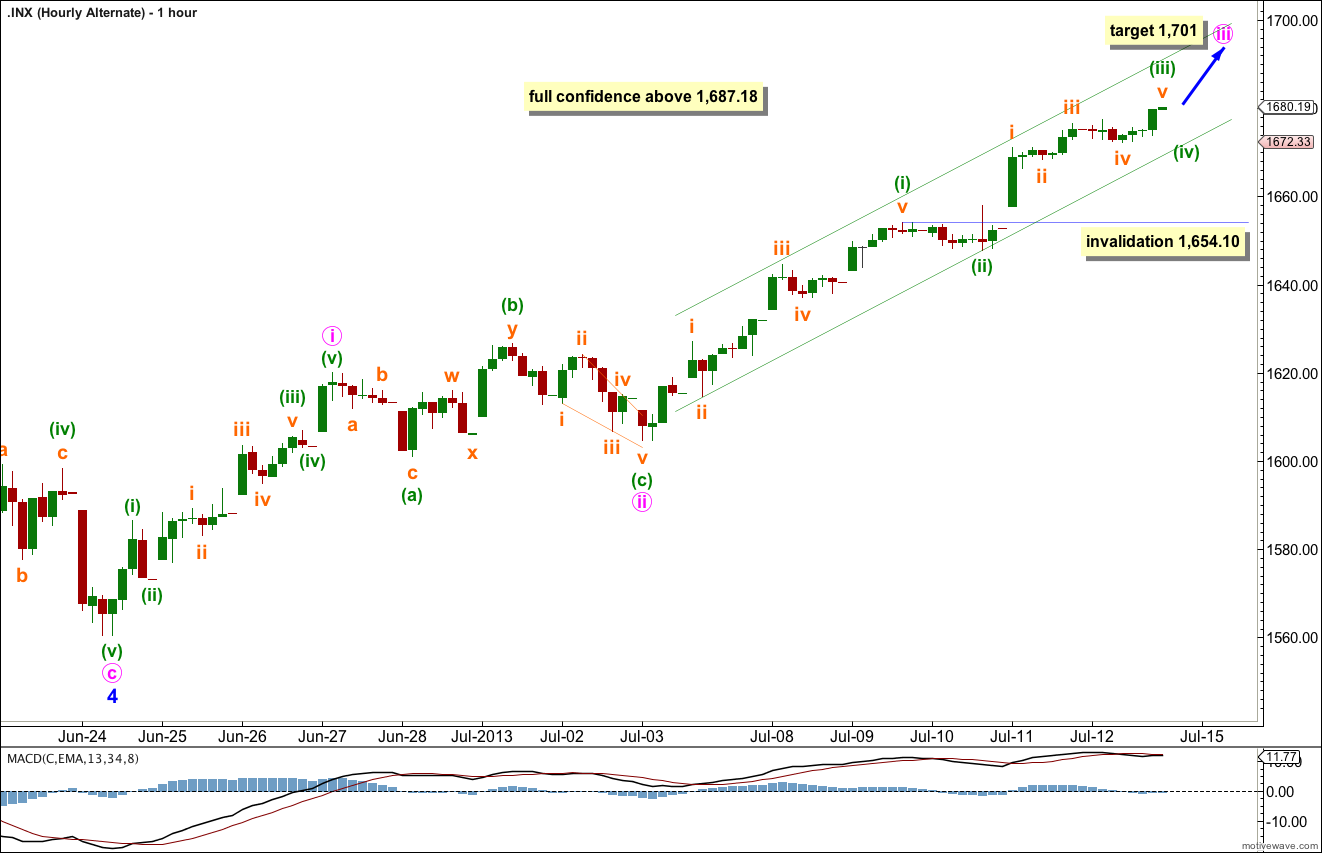More upwards movement was expected by the alternate wave count. Price is now closer to the invalidation point for the main wave count and both wave counts remain valid.
The main and alternate wave counts have an even probability. We need to see price break above 1,687.18 or below 1,560.33 to have one wave count confirmed and the other invalidated.
Click on the charts below to enlarge.
Main Wave Count.
The widest maroon channel is copied over from the monthly chart and contains all of cycle wave b. It may be that price found final resistance at the upper edge of this channel.
The black channel in the middle is drawn about the zigzag of primary wave Y. Draw the first trend line from the start of primary wave Y to the end of intermediate wave (B). Place a parallel copy upon the extreme within intermediate wave (A). The upper edge of this channel also may be where price found resistance and where intermediate wave (C) ended.
The smallest blue channel is the most conservative best fit I can see for intermediate wave (C). It is very clearly breached by downwards movement.
What would give me confidence in this trend change is a clear breach of the black intermediate degree channel. When that is breached I will calculate long term downwards targets for you.
There is no classic technical divergence between price and MACD on the daily or weekly charts. This is possible, but unusual for the S&P 500. This must reduce the probability of this wave count.
There are no Fibonacci ratios between minor waves 1, 3 and 5 within intermediate wave (C). There is no Fibonacci ratio between intermediate waves (A) and (C). This lack of Fibonacci ratios slightly reduces the probability of this main wave count.
Minor wave 1 must be unfolding as a leading diagonal. Within the diagonal minute wave i is complete. Minute wave ii is either complete or very close to completion.
Minute wave ii may not move beyond the start of minute wave i. This wave count is invalidated with movement above 1,687.18.
Price remains within the small parallel channel containing minute wave ii zigzag. We need to see this channel breached by downwards movement to have an indication that the next wave down is underway.
Minute wave ii is now 0.94 the length of minute wave i. The common length for second waves within diagonals is between 0.66 to 0.81. This reduces the probability of this wave count.
Minuette wave (c) is nos 5.74 points longer than equality with minuette wave (a).
Ratios within minuette wave (c) are: subminuette wave iii has no Fibonacci ratio to subminuette wave i, and subminuette wave v is 0.79 points longer than 0.236 the length of subminuette wave i.
Minute wave iii must move beyond the end of minute wave i at 1,560.33. This would provide confidence in the main wave count at both the hourly and daily chart level.
Within diagonals there is normally no Fibonacci ratio between first, third and fifth waves. When minute wave iii is underway we may use the Fibonacci ratio between minuette waves (a) and (c) within it to calculate a target for minute wave iii to end.
Minute wave ii may not move beyond the start of minute wave i. This wave count is invalidated with movement above 1,687.18.
Alternate Wave Count.
Minor wave 4 is out of proportion to all the other corrections within intermediate wave (C) and clearly breaches a channel containing intermediate wave (C) no matter how that channel is drawn. Sometimes fourth waves do this and so we must consider this possibility.
Within intermediate wave (C) minor wave 3 is 23 points longer than 4.236 the length of minor wave 1.
The lack of classic technical divergence between price and MACD supports this wave count. A final fifth wave up with slowing momentum would provide divergence and give a typical look in terms of momentum.
At 1,740 intermediate wave (C) would reach equality with intermediate wave (A). At 1,747 minor wave 5 would reach 0.618 the length of minor wave 3.
Minor wave 4 may not move into minor wave 1 price territory. This wave count is invalidated with movement below 1,409.16. However, if a new low below 1,560.33 were to occur this wave count would look so strange and wrong it would be discarded.
So far this wave count agrees with MACD in that the strongest upwards momentum within minute wave iii is within the middle of its third wave.
If minuette wave (iii) is over here then it would be 1.92 points longer than 0.618 the length of minuette wave (i). However, there is no downwards movement at the end of Friday’s session to confirm that the final fifth wave within minuette wave (iii) is over. We must accept that it may yet move a little higher.
When minuette wave (iv) unfolds it may not move into minuette wave (i) price territory. This wave count is invalidated with movement below 1,654.10.
The target for minute wave iii remains the same: at 1,701 it would reach 1.618 the length of minute wave i.





On page 12-43 of Mastering Elliott Wave about the “Expansion of Possibilities” concept. When this phenomenon occurs, a trend is only half complete. GOLD could be looking at a very big drop… coming.
Lara,
You have mentioned that you are looking for MACD divergence on this final fifth wave up (I assume we are going to see new highs shortly and that your alternate count will prove to be correct).
Do you feel that we are seeing that type of divergence now? The recent rise has certainly been on very low volume (especially today), and MACD is considerably lower than its recent peak, but the longer this rise continues, the more likely that any divergence will be eliminated.
If we are in the final fifth wave, I assume it needs to wrap up pretty soon.
Thanks,
Peter
so far there is divergence, and quite a lot of it.
if the wave count for the alternate on the hourly is correct we have seen the middle of minute wave iii within minor wave 5 completed already.
what this means is we may actually have seen the strongest upwards momentum within minor wave 5, and it will continue to diverge from here as the fifth wave comes to an end.
however, the problem with impulses (if minor wave 5 is an impulse) though is figuring out which of the three actionary waves (1, 3 or 5) within them is extended. I use MACD a lot to guide me here. It could be that only minute wave i is coming to an end and yes, we may see momentum increase further.
EMA(13) and EMA(34) starting to open up on the upside … http://scharts.co/13dsrNc puting 1800 on the radar two months // IF weekly NYMO keeps on 2012 playbook 1-2 more months up.